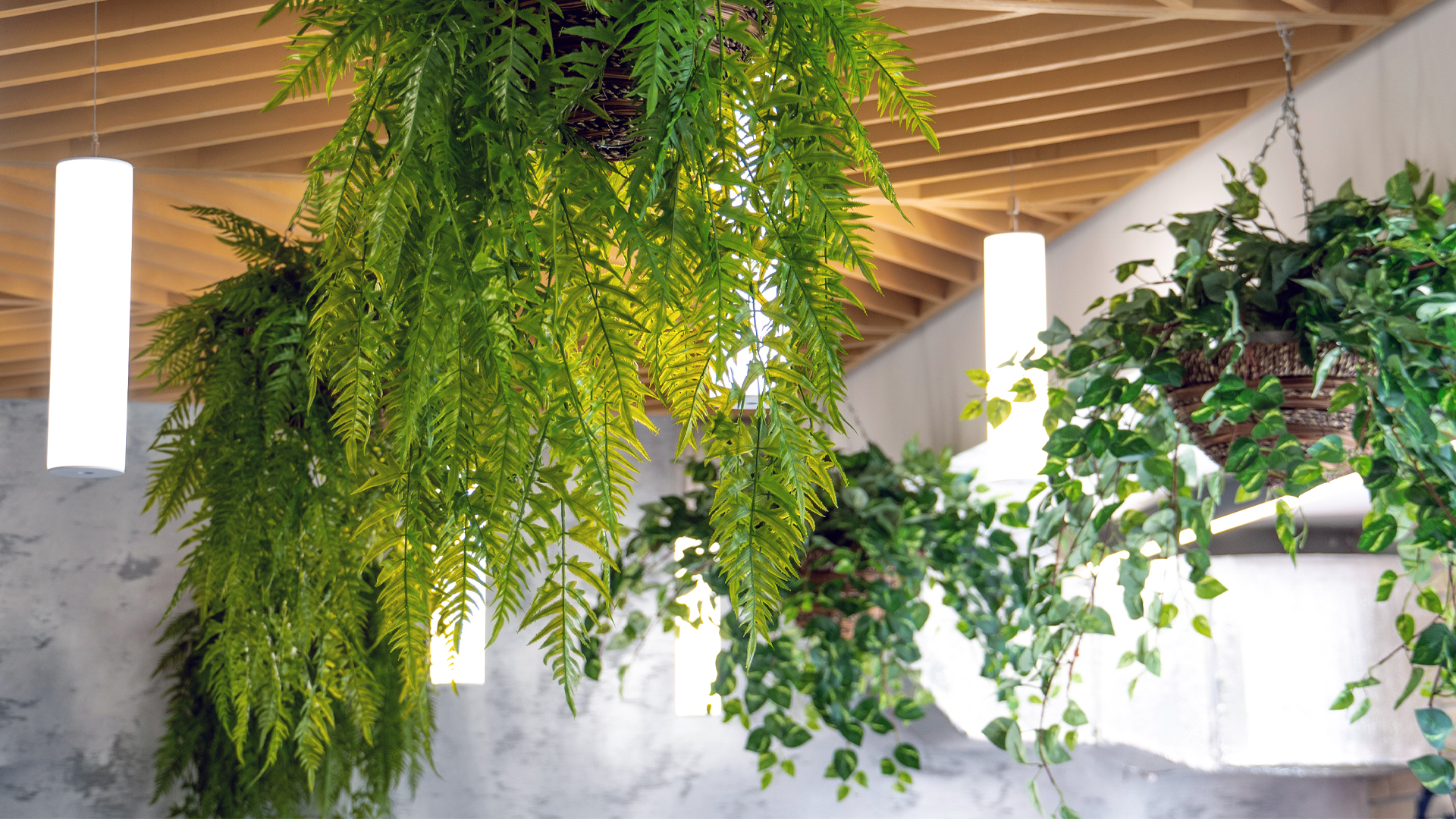An Introduction to Biophilic Design For Mental Health & Well-Being
Have you ever worked in a soul-crushing cubicle so devoid of natural light that you felt more android than human? If so, then the office wasn’t designed incorporating biophilic design principles.
As Winston Churchill famously said, “We shape our buildings, and afterward, our buildings shape us.”
Looking at the ubiquitous monotonous strip malls; uninspiring office parks; schools with views of concrete courtyards; hospitals and medical centers with no windows, and cookie-cutter McMansions, it’s clear that much of our society has been shaped into a species totally disconnected from nature.
Can biophilic design help humanity get back to the healing elements of the outside world—even if many of us have to be indoors for much of the day?
What is Biophilic Design?
“Biophilic” literally means “love of life.” It’s hard to love life when you’re slaving away in an office with a dull view for 40-plus hours a week. By merging the natural elements with art, science, and architecture, biophilic design offers a healing philosophy in the construction of modern buildings.
Biophilic design may help reduce stress in the same way that forest bathing may enhance healing for overworked Japanese ‘salarymen.’ According to Terrapin Bright Green (TBG), biophilic design qualities have never been more important as the world’s population continues to become more urbanized. Biophilic design, claims TBG, enhances creativity and clarity of thought, improves well-being and expedites healing.
Although biophilic design might seem like a new school of architecture in response to dystopian indoor living, its tenets of it have existed for millennia. A few ancient examples of biophilic design include the Biblical Hanging Gardens of Babylon, Roman countryside villas enjoyed by the ruling class; the mud-brick bluff-top homes of Yemen that stay cool in the blazing summer and pleasant in the frigid desert winter, and the masterpiece fusion of art, nature and Islamic geometric architecture of the Alhambra in Grenada, Spain.
Is Biophilic Design New?
As mentioned, the principles are ancient but the term is fairly new. It was coined in the 1980s by the biologist, Edward Wilson. Wilson’s theory blended architecture with what he considered to be an innate love of life and nature that became mostly lost due to industrialization.
By combining architecture and nature, humans can rediscover the joy—and healing elements—of being immersed in nature, Wilson proposed. His principles have inspired a new generation of architects, city planners, and builders to conceive designs that mimic the natural surroundings of communities with sustainable or regenerative materials, thereby benefiting humanity environmentally, socially and psychologically.
You’ve probably experienced slivers of the benefits of biophilic design throughout your life. Did the house you grew up in have a skylight that graced your bathroom, kitchen, or living room with natural, mood-elevating light? Have you ever stayed in a log cabin in the mountains? If so, you have an understanding of what biophilic design can do for your sense of well-being.
But in order to reverse the tide of crippling anxiety in society, increase productivity at the workplace, improve test scores and concentration in schools, and promote healing in medical facilities, it’s going to take a lot more than small indoor gurgling fountains, a few hanging plants, and kitsch poster board images of nature. It’s going to take a paradigm shift that corrects the separation from nature that many of us have suffered because of cold, insipid modern building design.
What Are Elements Of Biophilic Design?
Perhaps no other building in America is as synonymous with biophilic design as Frank Lloyd Wright’s Fallingwater in Western Pennsylvania. Designed in 1935, Fallingwater is completely surrounded by green foliage and built atop a natural waterfall.
Municipalities that have the budget can work with firms that can, as renowned architect Amanda Sturgeon put it, “re-wild the cities.” We see examples of this with atrium gardens and green walls both within and surrounding civic buildings.
Increasingly, large corporations realize the importance of biophilic design for boosting employee productivity and happiness. For example, Amazon, which is headquartered in one of the most biophilic cities in the USA—Seattle—constructed three spherical conservatories not just for the aesthetics, but so that employees can return to work feeling refreshed, eager to get back to fine-tuning the enigmatic nuances of the corporate monolith’s algorithms.
What Are Examples Of Biophilic Design Elements?
In one of the funniest episodes of the hit show, “The Office,” Michael Scott (Steve Carell) falls into a koi pond, landing him not just on wet turf, but once again as the butt of office jokes. Suspend your element of disbelief and imagine that The Office was really shot in Scranton, PA (the series was actually filmed in California). We don’t know who designed the koi pond in that fictitious building, but whoever it was, was inadvertently a proponent of biophilic design.
You don’t need to put a koi pond in your backyard (or in your home) in order to experience the benefits of biophilic design. With a little help from builder friends and ingenuity, you can use wood from native trees to create soothing geometric shapes on your walls at home and in the office. You can remove fluorescent lighting and replace them with circadian rhythm-friendly elements. And despite the earlier knock-on small gurgling fountains, they can indeed have a cortisol-lowering effect.
You can also replace plastic furniture with bamboo or wicker. And you can create a mini version of the Hanging Gardens by installing simple wooden boxes filled with indoor plants. (Get inspired by doing an online search for “moss walls.”)
Using locally-sourced, environmentally-friendly materials that offer the experience of being immersed in a natural setting is the name of the game.
Are There Downsides to Biophilic Design?
In recent weeks, certain liberal politicians have been criticized by more conservative-leaning pundits for their over-simplistic answer to surging fuel prices: electric cars for everybody. That tone-deaf solution, conservatives argue, fails to account for the fact that relatively few people can afford an electric car.
Similarly, not everyone can afford the services of a biophilic design-inspired architect. But again, we can bring the outside world to us, in our homes and offices and schools, for our benefit, even on a modest budget.
Sure, it might take a lot of money to build a new house using a builder who is familiar with biophilic design principles. But no matter the size of the project, we can transform monotonous cubicles and sterile spaces into healing environments that reconnect us with nature—and get us to love life a little more.

Disclaimer: The statements made in this article have not been evaluated by the Food and Drug Administration. Any products or treatments mentioned are not intended to diagnose, treat, cure, or prevent any disease. Please consult a licensed medical practitioner for medical advice.
At Innovative Medicine, we believe in transparency. We want you to know that we may participate in affiliate advertising programs pertaining to products mentioned herein.
See how we can help you restore complete health of body, mind & spirit.
Join our mailing list and receive exclusive offers + information!







Leave a Reply
Want to join the discussion?Feel free to contribute!